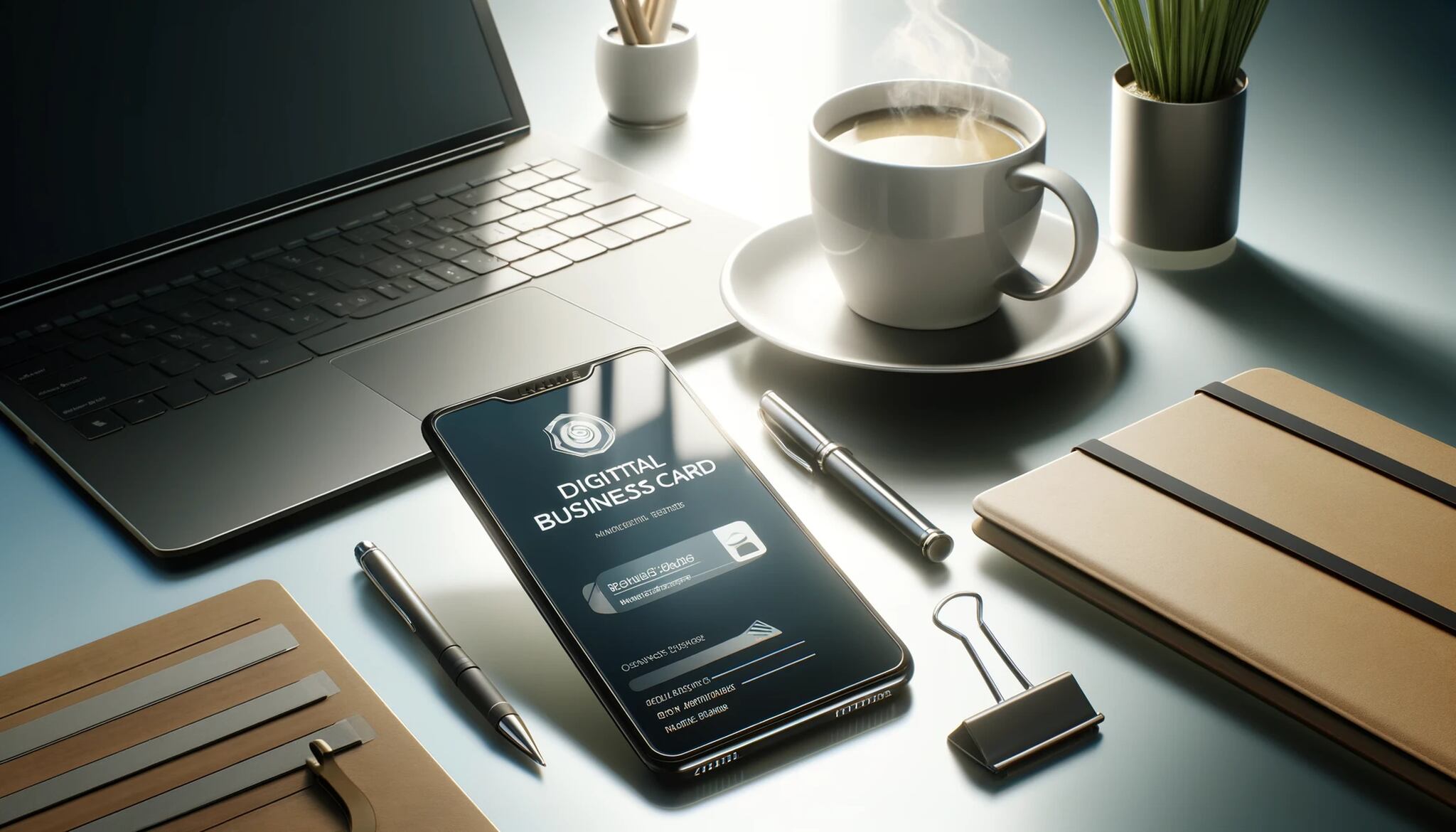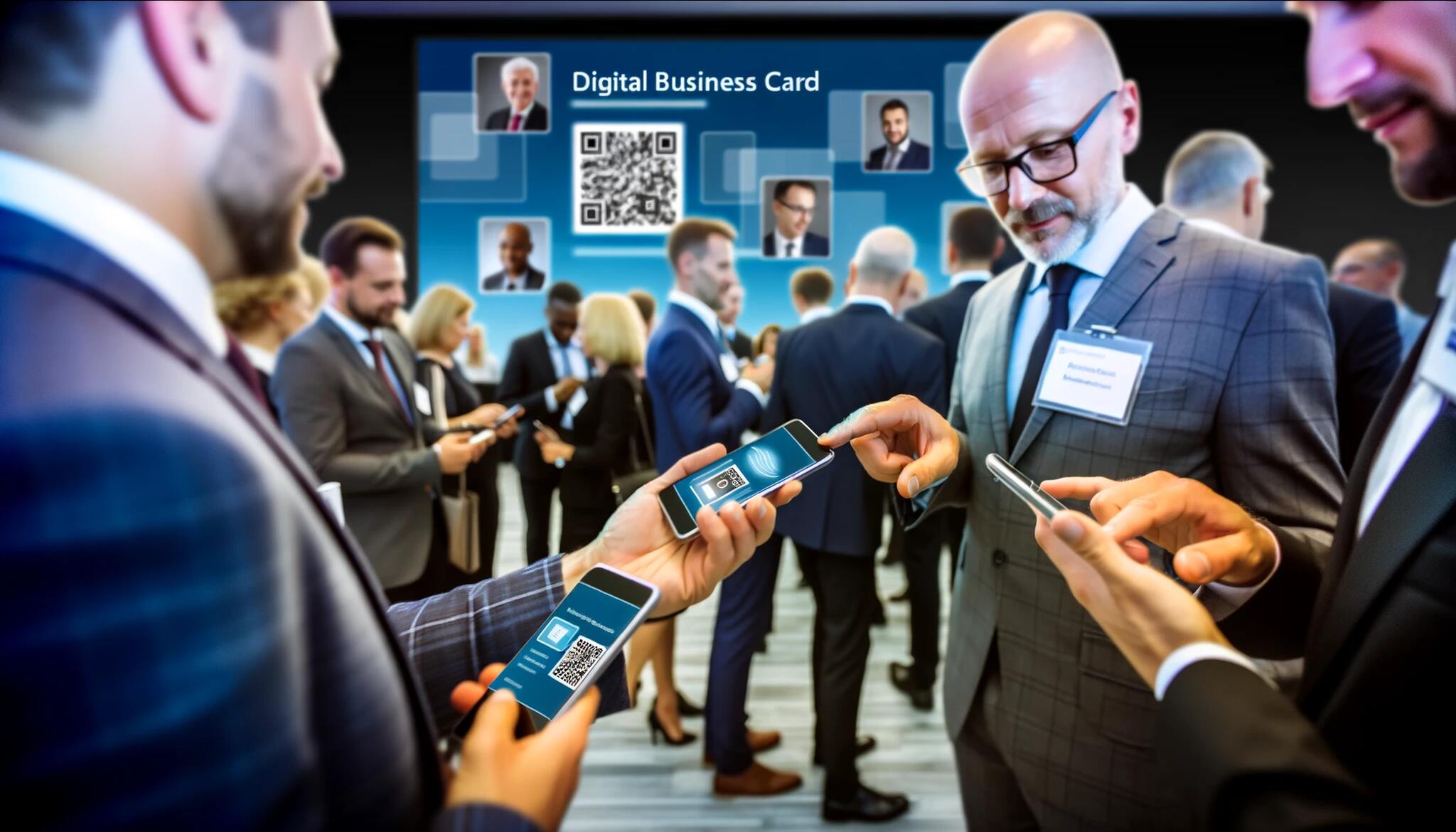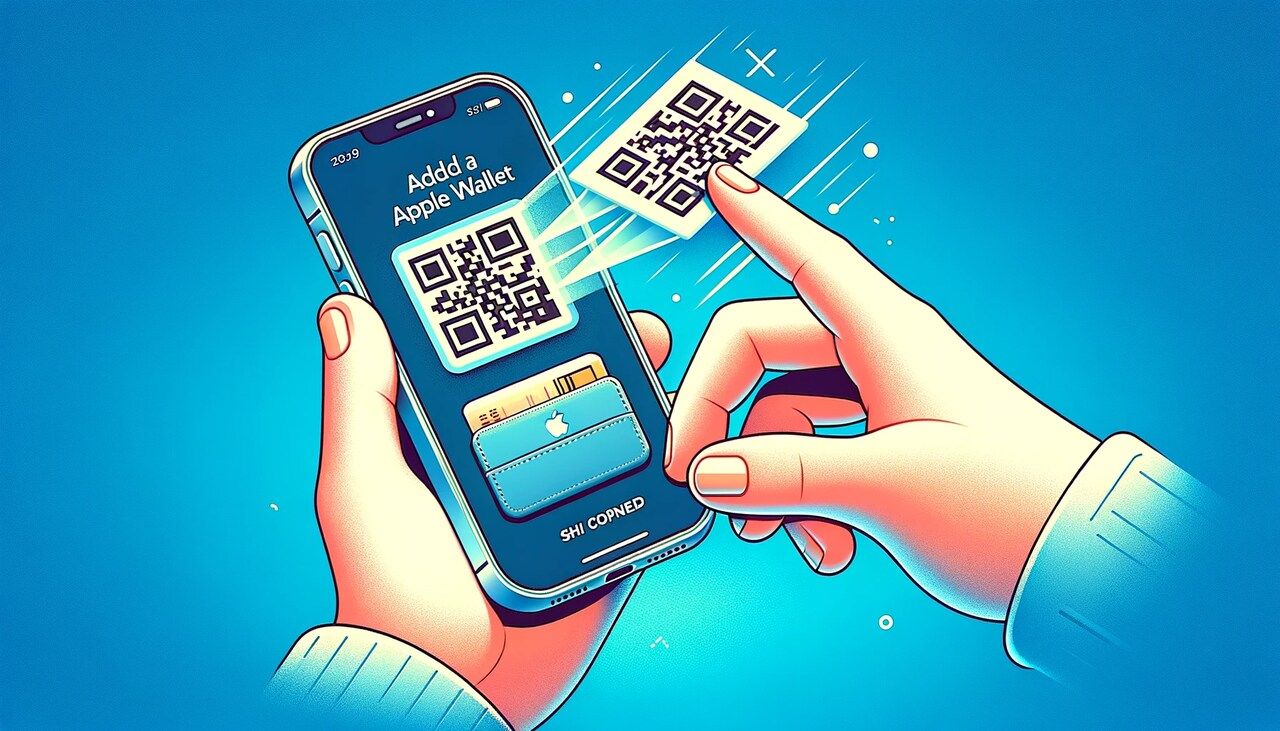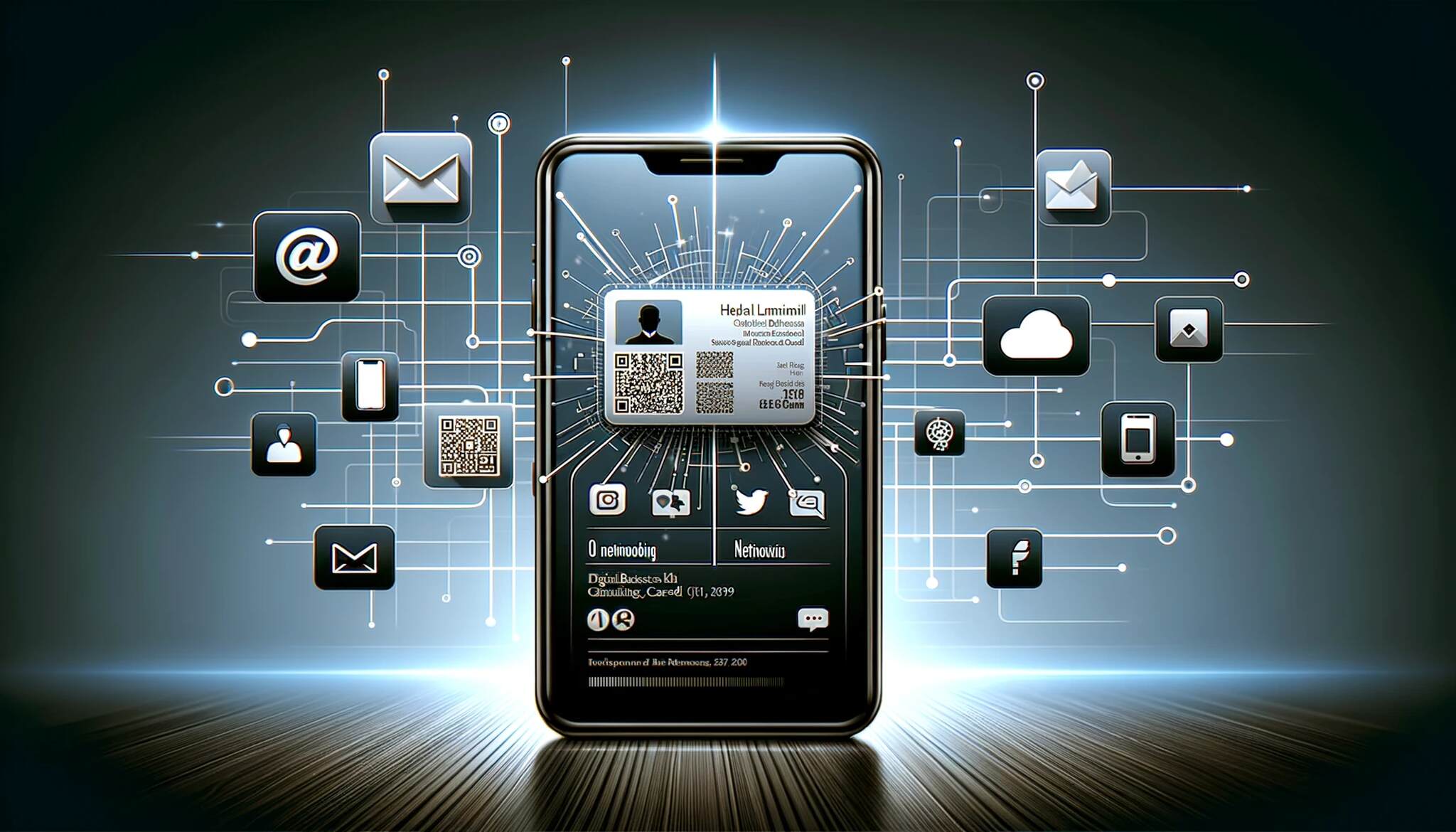A digital business card is a modern solution that leverages technology to make sharing your contact information effortless, eco-friendly, and efficient.
This guide will explain how to share digital business cards effectively. So, let's explore the endless possibilities digital business cards offer.
Benefits of Sharing a Digital Business Card
Here are some compelling reasons why you should start sharing digital business cards today:
Convenience and Accessibility

- Always in Your Pocket: You can run out of cards at networking events with digital business cards. Your card is always available on your smartphone, ready to be shared at a moment's notice.
- Easy to Update: Need to change your job title, phone number, or any other detail? Digital cards can be updated in real time, ensuring that your contacts always have your latest information.
- No More Bulky Wallets: Say goodbye to carrying a stack of business cards in your wallet or purse. Digital business cards are stored on your phone, making them easy to carry and share without any physical bulk.
Enhanced Networking
- Instant Sharing: Digital business cards can be shared instantly with anyone, anywhere, even if the recipient hasn't installed a specific app. This instantaneity enhances networking opportunities and connections.
- Follow-Up Made Easy: Sharing digital business cards can often be linked with immediate follow-up actions, such as adding to contacts and increasing the likelihood of meaningful post-event connections.
Rich Media and Interactivity
- Beyond Basic Information: Unlike traditional cards, digital business cards can include links to social media profiles, websites, portfolios, and multimedia content, providing a richer picture of your professional persona.
- Interactive Elements: You can incorporate interactive elements such as QR codes, allowing recipients to explore more about you and your business with a scan.
Track Engagement
- Insightful Analytics: Some digital business card platforms offer analytics, allowing you to track how often your card has been viewed or saved. This insight can be invaluable for understanding your networking effectiveness and adjusting your strategy accordingly.
Professional Image

- Stand Out: In a sea of paper cards, a digital business card can set you apart and make a memorable impression. It reflects that you're forward-thinking and aligned with technological advancements.
- Consistent Branding: Digital business cards ensure consistent branding, as they can be designed to match your company's visual identity, maintaining professional cohesion across all employee cards.
Cost-Effective
- Reduce Printing Costs: The cost of designing, printing, and distributing traditional business cards can increase, especially for large organizations. Once set up, digital business cards have virtually no additional costs for sharing with unlimited contacts.
Global Reach
- Share Anywhere, Anytime: Whether at a local coffee shop or an international conference, digital business cards can be shared across the globe in seconds, expanding your professional network without geographical boundaries.
Enhanced Security and Privacy
- Control Your Information: Digital business cards allow you to control what information you share and with whom, enhancing your privacy and security. You can create different versions for various contexts, such as networking events, sales pitches, or casual meet-ups.
Integration with Professional Tools
- Seamless Integration: Many digital business card platforms offer integration with professional tools like CRM systems, email clients, and social networks, streamlining your workflow and ensuring your contacts are always up to date.
How to Share a Digital Business Card
Digital business cards have emerged as a versatile and dynamic way to share your professional details.
Let's explore the various ways to distribute your digital card, ensuring you maximize every networking opportunity.
How to Share a Digital Business Card Using Your Apple or Google Wallet

- Step 1: Add your digital business card to your Apple Wallet or Google Pay. This usually involves downloading a file or scanning a QR code provided by your digital business card service.
- Step 2: Open your wallet app and select your digital business card.
- Step 3: Use the sharing feature within the app to send your card via AirDrop, email, or messaging apps. The seamless process ensures your card is always ready to be shared, even without internet access.
How to Automatically Send a Digital Business Card to Its Owner's Apple or Google Wallet
- Step 1: Create a shareable link or QR code for your digital business card through your card provider's platform.
- Step 2: When networking, simply share this link or have the other person scan the QR code.
- Step 3: Upon accessing the link or scanning the code, the recipient will be prompted to save your card to their Apple Wallet or Google Pay, making it easy for them to store and retrieve your information.
How to Share a Digital Business Card Using Siri
- Step 1: Ensure your digital business card is set up in a Siri-compatible app.
- Step 2: Activate Siri by holding down the Home button or saying, "Hey, Siri."
- Step 3: Say something like, "Share my digital business card." Siri will then access the card and offer sharing options like messaging or email.
How to Share a Digital Business Card Via QR Code

- Step 1: Generate a QR code for your digital business card. Most digital card providers offer this feature.
- Step 2: Display the QR code on your phone or print it on physical items like badges, flyers, or even your traditional business card.
- Step 3: Have the recipient scan the QR code using their smartphone camera or a QR code scanning app. This will direct them to your digital business card, which they can save or bookmark.
Discover business card templates:
- Modern & Professional QR Code Business Card Templates
- 10 Best Free Real Estate Business Card Templates & Tips
How to Send a Digital Business Card as a URL
- Step 1: Obtain a shareable URL for your digital business card from the platform where you created it.
- Step 2: Share this URL through any digital communication channel, such as email, text, or social media.
- Step 3: The recipient can click the link to view your digital business card and save your contact information directly from their browser.
How to Send a Digital Business Card Through Text Message
- Step 1: Access your digital business card on your phone or through a dedicated app.
- Step 2: Select the option to share your card, and choose 'Message' or 'SMS' as the sharing method.
- Step 3: Enter the recipient's phone number and send. They will receive a text message with a link or attachment to your digital business card.
How to Send a Digital Business Card Through Email
- Step 1: Compose a new email and attach your digital business card as a vCard, or include a link to your digital card in the email body.
- Step 2: Add a personal note or greeting to the email to provide context and enhance the recipient's experience.
- Step 3: Send the email. The recipient can download your vCard to their contacts or access your digital business card through the link.
How to Share a Digital Business Card On WhatsApp, Facebook Messenger, Instagram, or LinkedIn

- WhatsApp & Facebook Messenger: Start a chat with the recipient, attach your digital business card as a file, or paste the link to your card. Send it; the recipient can view and save your card directly from the chat.
- Instagram: Share your digital business card link in your bio, stories, or direct messages. Use the 'Swipe Up' feature or a sticker linked to your card for easy access when sharing stories.
- LinkedIn: Include the link to your digital business card in a message or post. You can also add the link to your contact info section, making it visible to profile visitors.
How to Send a Digital Business Card via NFC Technology
- Step 1: Ensure your digital business card is set up to be shared via NFC (Near Field Communication) and that both phones have NFC enabled.
- Step 2: Bring the two devices close together, back to back.
- Step 3: Your phone will prompt you to confirm the transfer. Once confirmed, the recipient's phone will display your digital business card, which they can save or bookmark.
Best Practices to Customize Digital Business Cards

Customizing your digital business card is a creative process that allows you to stand out and make a lasting impression.
Here's how you can tailor your digital business card to showcase your unique style and professional attributes:
Choosing the Right Design
- Reflect Your Brand: Select colors, fonts, and designs that align with your brand identity. Consistency across your digital presence reinforces brand recognition.
- Simplicity is Key: A cluttered business card can be overwhelming. Opt for a clean, simple design that makes key information easy to find.
- Be Creative: Digital cards allow for more creativity than traditional ones. Consider using interactive elements like buttons or sliders to engage recipients.
Incorporating Multimedia
- Add a Personal Touch: Include a professional photo or a short introductory video. This can help recipients remember you and create a more personal connection.
- Showcase Your Work: For creatives, including a portfolio link or images of your work, can turn your card into a mini-exhibition of your skills.
Making It Interactive
- Clickable Links: Ensure that your social media handles, website, and email address are clickable. This makes it easy for recipients to explore your digital presence and connect with you.
- QR Codes: Incorporate a QR code to direct recipients to your website, LinkedIn profile, or a special offer. It's a quick way for others to learn more about you and your services.
Highlighting Key Information
- Prioritize Information: Decide what's most important for your contacts to know. Whether it's your role, your portfolio, or your contact information, make sure it's front and center.
- Use Icons: Visual icons for phone, email, and social media can make your card visually appealing and easy to navigate.
Personalizing the Content
- Tagline or Slogan: Include a short, memorable phrase that represents your professional ethos or your business's value proposition.
- Unique Offerings: Highlight what sets you apart, be it a unique skill, service, or product. Make it clear why someone should choose to connect with you.
Adapting for Different Audiences
- Multiple Versions: Consider creating different versions of your card for various audiences or occasions. You might have a more formal version for corporate events and a more creative one for industry conferences.
- Language Options: If you operate in a multilingual environment, offer versions of your card in different languages.
Feedback and Iteration
- Seek Feedback: Don't be afraid to ask colleagues or friends for feedback on your digital card's design and content. Fresh eyes can offer valuable insights.
- Iterate and Update: One of the great advantages of digital cards is the ease with which they can be updated. Use this to your advantage to refine and improve your card over time.
How to Choose the Right Provider for Creating and Sharing Digital Business Cards

Here's a guide to help you navigate through the options and select a provider that best aligns with your professional objectives and preferences.
Consider the User Experience
- Ease of Use: Look for a platform that offers an intuitive interface, making it straightforward to create, customize, and share your digital business card. A good user experience is key to ensuring that you can manage your card effectively without unnecessary complications.
- Customization Options: The ability to customize your digital business card to reflect your brand is essential. Ensure the provider offers a wide range of design templates, color schemes, and the ability to add multimedia elements like images, videos, and links.
Functionality and Features
- Sharing Capabilities: Assess the ease with which you can share your digital business card across various platforms. The provider should offer seamless sharing via email, text, QR codes, social media, and even through NFC technology for in-person exchanges.
- Interactive Elements: Providers that allow you to add interactive elements such as clickable links, social media icons, and QR codes can enhance the recipient's experience, making your card more engaging and useful.
- Analytics and Tracking: Some providers offer analytics features, enabling you to track how often your card is viewed or shared. This can be a valuable tool for measuring the effectiveness of your networking efforts.
Integration with Other Tools
- Compatibility with Professional Platforms: The best digital business card providers offer integration with popular professional tools and platforms, such as CRM systems, email clients, and LinkedIn. This can streamline your networking process, making maintaining and growing your professional connections easier.
- Syncing with Contact Lists: Providers that can sync your digital business card with your contact list help ensure that your network is always up to date, making follow-ups and communication more efficient.
Quality and Reliability
- Reputation and Reviews: Research the provider's reputation within the industry. Look for reviews and testimonials from other users to gauge their satisfaction with the service. A provider with a solid track record is more likely to offer a reliable and quality service.
- Customer Support: Access to responsive customer support is crucial, especially when dealing with digital tools. Ensure the provider offers comprehensive support options, such as live chat, email support, and a knowledge base for troubleshooting.
Cost Considerations
- Transparent Pricing: Understand the provider's pricing structure before committing. Look for transparency in pricing to avoid unexpected costs. Some providers offer free versions with basic features, while premium plans may include advanced customization and analytics.
- Value for Money: Assess the range of features offered against the price. The cheapest option isn't always the best if it lacks essential features or reliability. Consider your specific needs and whether the provider's offering justifies the cost.
Security and Privacy
- Data Protection: In the digital age, data security is paramount. Ensure the provider has robust security measures in place to protect your information and that of your contacts. Look for providers that comply with data protection regulations such as GDPR.
- Privacy Settings: Choose a provider that offers flexible privacy settings, allowing you to control what information is shared and with whom. This is particularly important for professionals who need to maintain a certain level of confidentiality in their communications.
Scalability and Flexibility
- Adaptability to Growth: Your professional needs may evolve, and your digital business card provider should be able to accommodate this growth. Look for platforms that offer scalable solutions, allowing you to upgrade or add features as your networking demands increase.
- Flexibility for Various Use Cases: Your digital business card should be adaptable whether you're attending a formal business conference or a casual networking event. Providers that can create multiple versions of your card for different contexts can be especially useful.
Sustainability and Ethical Considerations
- Eco-Friendly Practices: For environmentally conscious professionals, it's essential to consider the provider's commitment to sustainability. Opt for providers that emphasize eco-friendly practices and contribute to reducing the environmental impact of traditional business cards.
Community and Networking Opportunities
- Built-In Networking Platforms: Some digital business card providers offer access to a community or networking platform, allowing you to connect with other professionals within the service.
Tips for Sharing Digital Business Cards

Here are some invaluable tips to ensure your digital business card reaches your audience and leaves a lasting impression.
Know Your Audience
- Tailor Your Approach: Different audiences may prefer different platforms for communication. Understanding whether your contacts are more active on email, LinkedIn, WhatsApp, or other platforms can help tailor your sharing strategy.
- Customize Your Content: Depending on your audience, you might want to highlight certain aspects of your professional background. For a tech audience, focus on your technical skills or projects; for a creative crowd, showcase your portfolio.
Use the Right Moment
- Timing Is Key: Share your digital business card at the peak of your interaction when the conversation indicates a genuine interest in staying in touch. This could be after a meaningful conversation at a networking event or a productive meeting.
- Follow-Up: If you've just met someone and exchanged verbal information, sending them your digital business card as a follow-up can reinforce your new connection and provide them with a tangible reminder of your encounter.
Integrate With Your Digital Presence
- Email Signature: Include a link to your digital business card in your email signature. This ensures that every email you send out is an opportunity to share your professional details.
- Social Media Profiles: Utilize the bio sections of your social media profiles to include your digital business card link, making it easy for new contacts to discover more about your professional background.
Leverage Technology

- QR Codes: Use QR codes creatively – on your physical business cards, presentations, or resumes. This provides a quick and seamless way for people to access your digital business card.
- NFC Technology: If you have NFC business cards or tags, use them during in-person meetings by simply tapping them on the phone, instantly transferring your contact details.
Educate Your Recipients
- Guide Them: Not everyone may be familiar with digital business cards. Take a moment to explain how they work and the benefits of using them. This helps in smooth sharing and enhances the recipient's experience.
- Demonstrate the Features: Show how your digital business card can be saved and the clickable links and other interactive elements. This can significantly increase the chances of your card being utilized and saved.
Personalize Your Sharing
- Add a Personal Note: Whether you share your card through email, text, or social platforms, adding a personal message can make a big difference. It adds warmth to your digital interaction and can help reinforce the connection.
- Contextualize: When sharing your card, remind the recipient of who you are and where you met if it's not immediately obvious. This helps place your card in context and increases the likelihood of a positive response.
Follow Up
- Check-In: After sharing your digital business card, don't hesitate to follow up if you haven't heard back. A gentle reminder can prompt further interaction and open up new opportunities for collaboration or networking.
- Stay Active: Keep the conversation going even after the initial card exchange. Share relevant articles and upcoming events, or just check-in. This keeps your connection alive and meaningful.
Respect Privacy and Consent
- Ask for Permission: Before sending your digital business card, especially in a direct or personal manner like text or WhatsApp, it's polite to ask for permission. This shows respect for the recipient's privacy and increases receptivity.
- Be Mindful of Data: Understand and communicate how any data shared via your digital business card will be used. This builds trust and ensures compliance with data protection regulations.
Keep It Updated
- Regular Updates: One of the great advantages of digital business cards is the ease of updating them. Ensure your card reflects your current role, projects, and contact information to maintain professionalism and reliability.
- Feedback Loop: Be open to feedback about your digital business card and use it as an opportunity to improve and update your card for better engagement.
Analyze and Adapt
- Track Engagement: If your digital business card platform offers analytics, use these insights to understand how your card is used. This can inform you about what works best and help tailor your sharing strategy.
- Adapt Strategies: Based on the engagement and feedback, adapt your sharing methods, design, or content to better meet your networking goals and audience preferences.
Conclusion
Embracing digital business cards marks a significant step forward in the evolution of networking and professional interactions.
By using the tips and strategies outlined in this guide, you're well on your way to making your digital business card a powerful tool in your professional arsenal.
Remember, the goal is to share your contact information and create meaningful connections that can grow into fruitful relationships.
Frequently Asked Questions
Can I use digital business cards without a technical background?
Absolutely! Digital business cards are designed to be user-friendly, with intuitive platforms that guide you through creating and sharing your card. Plus, with various sharing options like QR codes and URLs, you can choose the most comfortable method.
How can I ensure my digital business card stands out?
Customization is key. Take advantage of the ability to add multimedia elements, like videos or links, to your portfolio, and ensure your card reflects your brand through design choices. Being creative and personalizing your card will make it memorable.
Are digital business cards secure?
Yes, reputable digital business card providers prioritize security and privacy. However, reviewing their privacy policies and understanding how your information is stored and shared is essential. Also, be mindful of the information you include on your card to maintain your privacy.
Can I have multiple versions of my digital business card for different purposes?
Certainly! One of the advantages of digital business cards is the flexibility they offer. You can create different versions tailored to specific audiences, occasions, or purposes, ensuring your card is always relevant to the person you share it with.
How often should I update my digital business card?
Regular updates are essential to keep your card relevant. Make sure to update your card whenever there's a change in your contact information, job title, or professional achievements. It's also a good idea to periodically review your card to see if there's new content or design elements you can add to enhance it.
Discover our latest blog posts:


